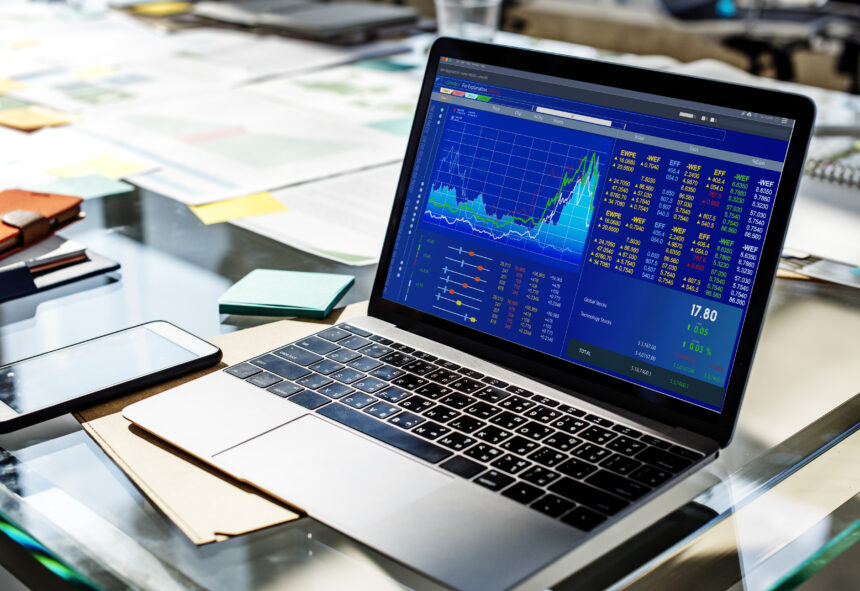The world of financial markets has undergone a significant transformation over the years, with the advent of technology revolutionizing the way trading is conducted. One of the key developments in this realm is the rise of algorithmic trading, also known as automated trading systems. In particular, the foreign exchange market, or Forex, has witnessed a surge in the use of these systems. In this article, we will delve into the world of Forex trading and explore the concept of algorithmic trading, shedding light on its benefits, challenges, and future prospects.
Forex trading refers to the buying and selling of currencies in the global marketplace. It is the largest and most liquid financial market, with trillions of dollars being traded every day. Traditionally, Forex trading was predominantly carried out by human traders who would analyze market conditions, economic indicators, and geopolitical events to make informed trading decisions. However, with the rise of algorithmic trading, computers and software programs have taken center stage, executing trades based on pre-defined rules and algorithms.
Algorithmic trading involves the use of computer algorithms to automatically execute trades. These algorithms are designed to analyze vast amounts of data, identify patterns, and make trading decisions based on predefined rules and parameters. The algorithms can be built to incorporate various technical indicators, fundamental factors, and market conditions to generate trading signals. Once a trading signal is generated, the algorithmic trading system can execute trades at high speed and with precision.
One of the key advantages of algorithmic trading is its ability to remove human emotions from the trading process. Emotions such as fear, greed, and panic can often cloud judgment and lead to irrational trading decisions. Automated trading systems, on the other hand, operate based on logic and predefined rules, ensuring that trades are executed consistently without being influenced by emotional factors. This can help eliminate costly human errors and improve overall trading performance.
Furthermore, algorithmic trading offers the potential for increased efficiency and speed. Computers can analyze vast amounts of data and execute trades within milliseconds, allowing for quick response to market conditions and taking advantage of short-term price movements. This speed advantage can be crucial in the Forex market, where currency prices can fluctuate rapidly. Automated systems can also monitor multiple currency pairs simultaneously, providing opportunities for diversification and capturing trading opportunities across different markets.
Another benefit of algorithmic trading is its ability to backtest trading strategies. By using historical data, traders can simulate their trading strategies and evaluate their performance over time. This allows for fine-tuning and optimization of strategies before deploying them in live trading. Backtesting can help identify the strengths and weaknesses of a trading strategy, enabling traders to make data-driven decisions and improve the overall profitability of their trading systems.
However, algorithmic trading is not without its challenges. Developing and maintaining a successful automated trading system requires technical expertise and a deep understanding of the financial markets. Traders need to have a solid grasp of programming languages, statistical analysis, and market dynamics to create robust algorithms. Additionally, continuous monitoring and adjustment of the trading system are necessary to adapt to changing market conditions and avoid over-optimization.
Moreover, there are certain risks associated with algorithmic trading. As automated systems rely on historical data and predefined rules, they may encounter situations that deviate from the expected patterns. Unforeseen events, market anomalies, or technological glitches can lead to substantial losses if not properly managed. It is essential for traders to incorporate risk management measures and implement safeguards to protect against potential system failures or excessive market volatility.
Looking ahead, the future of algorithmic trading in Forex appears promising. Advancements in technology, such as machine learning and artificial intelligence, are being integrated into trading systems, enabling them to adapt and learn from new market conditions. These developments have the potential to enhance the accuracy and profitability of algorithmic trading strategies. Furthermore, regulatory bodies are keeping pace with these advancements, working to ensure transparency, fairness, and stability in algorithmic trading.
In conclusion, algorithmic trading has transformed the landscape of Forex trading, offering numerous benefits to traders. By automating the trading process, algorithmic systems eliminate human emotions, increase speed and efficiency, and enable backtesting of strategies. However, it is crucial to acknowledge the challenges and risks associated with algorithmic trading, emphasizing the need for continuous monitoring and risk management. As technology continues to evolve, algorithmic trading is poised to play an increasingly significant role in the financial markets, shaping the future of Forex trading.










